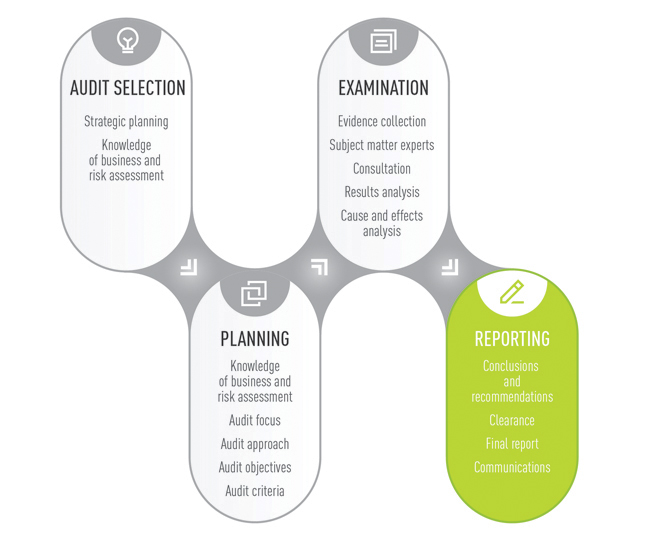Reporting the Results of an Audit of Gender Equality

The focus of this section of the Practice Guide is on techniques that can be used to increase the impact of reports of audits of gender equality. Formats and writing styles for performance audit reports are specific to individual audit offices and are not discussed in this Practice Guide.
Reporting the results of audits of gender equality is similar to reporting for other types of performance (value-for-money) audits. As with any audit report, it is important to consider how audit findings can best be presented to achieve maximum impact, present a persuasive case for positive change, and reduce the potential for misinterpretation of audit observations and conclusions. That being said, audit reports on gender equality pose particular risks that must be considered and managed.
For example, the presentation of gender-disaggregated information may mask underlying assumptions of what constitutes gender equality. The auditor may be making a case for workforce representation that matches the local population of qualified workers. The hidden assumption is found in the definition of “qualified worker” where there may be a built-in gender bias to become “qualified.” In these cases, the auditor can manage the reporting risks by validating findings and assumptions with subject matter experts.
Because the media and public may have preconceived opinions of the level of gender equality in public sector organizations, published findings may generate strong stakeholder reactions and unintended consequences. For example, there could be calls to cancel a gender equity or equality program that presents some effectiveness issues that could be fixed. This risk is heightened when the audit report involves comparison or benchmarking with other organizations. For these reasons, it is important that audit reports and media communications contain very clear messages. In particular:
-
When reporting that gender equality could be achieved with the same resources, it may be appropriate to emphasize that in such a case, gender equality could be achieved in a cost-neutral manner.
-
When reporting on gender equality improvements that could be achieved through program modifications, it should be clarified whether these modifications may require upfront investments (such as training programs or infrastructure improvements).
In addition, audit reports on gender equality use tables, charts, and graphs to convey audit findings.While these communication tools can be highly effective—they will capture the reader’s attention if done well—they are susceptible to misinterpretation and could raise questions by readers. When using charts and graphs, auditors must take care to provide in the accompanying text all the information needed to answer these potential questions.
Auditors should be aware that the successful use of quantification, tables, charts, and graphs often depends on thinking about presentation formats and the data required early in the audit. Waiting for the reporting phase to identify the data required for a chart or graph may not leave enough time to obtain reliable information and still meet reporting deadlines. Auditors should also remember that information used in charts and graphs must be subjected to rigorous quality assurance in the same way as other types of audit evidence.
The following pages present samples of good presentations of gender equality findings.


